Profile of a Great Goan
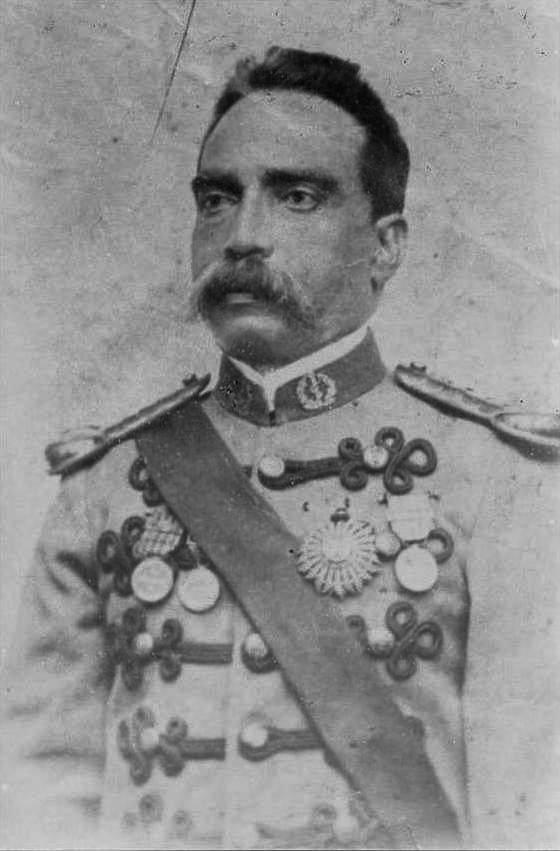
Miguel Caetano Dias (9 July 1854 – 26 July 1936) came from very humble beginnings at Jua, St. Estevam. From an early age, he is said to have had an affinity for specializing in healing and a desire to leave the shores of his island hometown. Despite his poor condition, he managed to pursue his medical studies at the University of Lisbon with the help of his brother and subsequently worked as a highly successful battle field Doctor in Mozambique for 5 years. He returned to Goa in 1888, as a Doctor of high standards, whose medical knowledge was permeated with military concepts. His reputation preceded him on his return and was met by enthusiastic crowds of his fellow Juvemkars who received him in Panjim.
He was appointed as Director of Health Services in Portuguese India and of the Escola Medico-Cirurgica de Nova Goa (Goa Medical School) as the school had fallen on hard times. Poonam Bala in her book “Contesting Colonial Authority: Medicine and the Indigenous Response in 20th century India” states that despite being the first medical school in Asia its condition deteriorated to such abysmal levels that in 1902 the Portuguese parliament deliberated whether it was best to shut down the medical school for good. This fall from grace was mainly due to the fact that the school was tolerated, and not supported by the Portuguese government on account of the social concessions it had to make to the local caste elite. The school served the interest of the local caste elite who valued education, prized degrees and whose interests were aligned with the those of the Portuguese regime.
This all changed with the mandate of Dr. M.C. Dias. He played an instrumental role in revamping the school’s curriculum and in-turn paving the way for Goans to study medicine in the best possible manner in their own environs. He also introduced high standards of medical practices that were in line with the most modern advancements in Europe. His anti-plague campaigns were conducted ferociously and his reflections on epidemics reflected the most up-to-date understanding of infections. It was under his leadership that the bubonic plague that infested Old Goa and its surroundings in the early 1900s was successfully eradicated. His reforms at the medical school and the Goan Health Services led to the adoption of modern medicine across all segments of Goan society.
Through sheer hard work and personal merit, ‘Doutor’ M.C. Dias grew in stature and attained rapid promotions throughout his career. Due to his successes in improving the sanitary conditions in Goa and his efforts in eradicating the plague of Old Goa the Portuguese Government bestowed on him several honours, including the ancient Portuguese order of chivalry, “Cavaleiro, Official e Comendador da Real Ordem Militar de S. Bento de Aviz” (Knight, Administrator and Commander of The Royal Military Order of St. Benedict of Aviz), by D. Amelia, the Queen of Portugal. His timely service, wholehearted dedication to Goan society combined with his intellectual prowess led him to be conferred the title ‘General’ by the Portuguese Government, being the first and the only Goan to be so honoured in Portuguese Medical Corps.
Dr. M.C. Dias’ achievements are all the more outstanding given his background. He essentially rose from poverty, overcame the barriers of caste and social stigma to attain greatness. At that time, medicine was usually a field dominated by the upper caste elites. He shattered that glass ceiling and worked his way to the top of the administrative posts of his field opening avenues for others of his background to follow suit. Eventually he overcame the enormous social barriers of Goan society and commanded respect from the highest authorities in Goa and Portugal.
Dr. M.C. Dias shifted his residence to Panjim at the former Casa da Moeda. A bust of him was initially installed in the premises of the Goa Medical College whilst still alive which was later shifted in front of the house upon his death, a commentary on the high regard people held him with.
Dr. M.C. Dias. brushed shoulders with intellectuals and the ruling classes of the day whilst being part of several social, scientific, educational and civic bodies. Yet, he always remained modest and approachable to the public at large. He cherished his roots at St. Estevam and expressed his desire to be buried in the village cemetery upon his death, which came to fruition after he passed away on 26 July 1936.
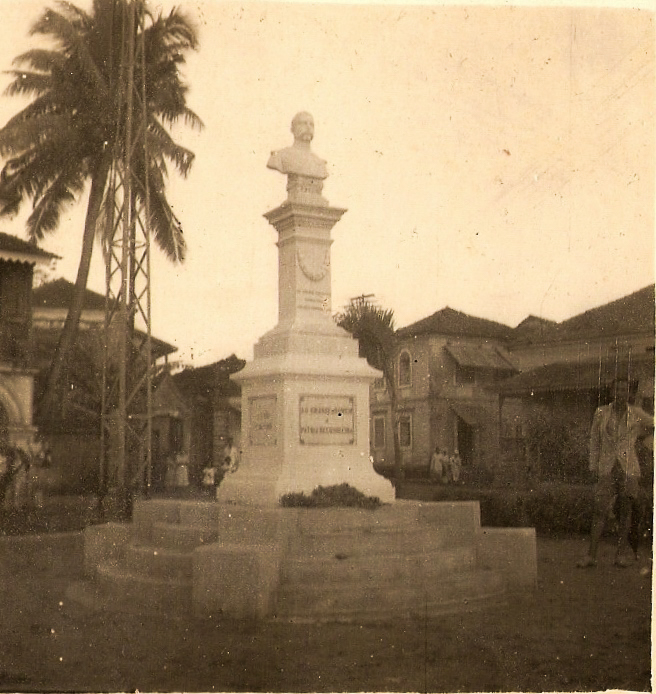
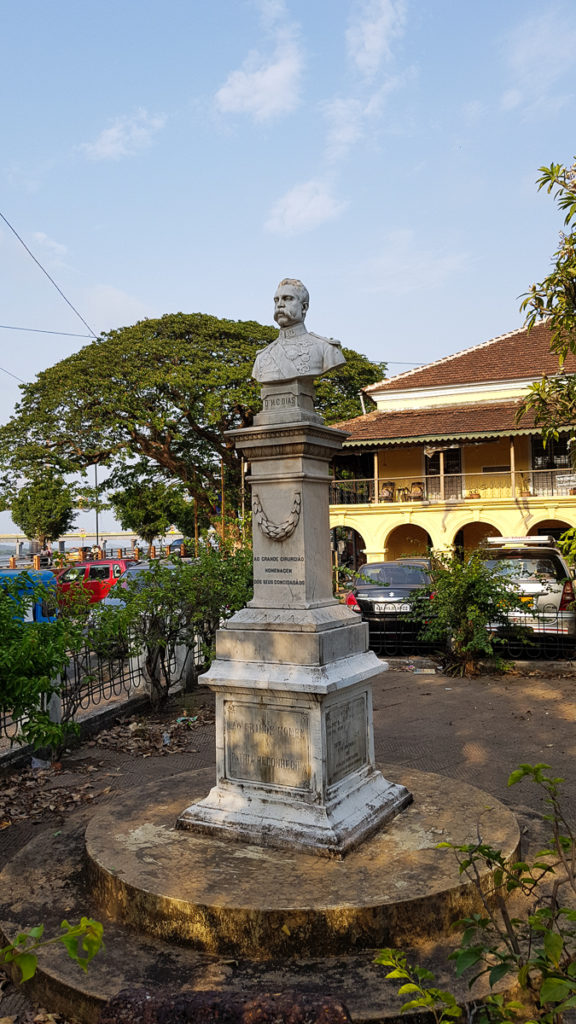
The family Chapel
Decades of service and achievement brought in with him a large amount of wealth. Dr. M.C. Dias invested a good amount of it in property. He purchased a large tract of land in Narve, an island along the Mandovi, and opposite the neighbouring home islands of Akhada and Jua, St. Estevam. At the edge of the cliff, he built a Chapel.
The Chapel was so positioned that standing at it’s door step, he could get a view of the Church of St. Estevam when he would pray. The view of the entire island was also a breathtaking one, and allowed him to remain in sight of his St.Estevam roots (quite literally!). This small religious structure was built above his retreat house that was situated on the banks of the Mandovi. His children then built more houses for themselves on the lower reaches of the property. He would often visit the Chapel to pray, and it must have been the family venue for many Ladhainas in his lifetime, and even thereafter.
His descendants would occasionally visit this chapel and conduct prayers there, though it has fallen out of use in recent times. Architect Fernando Dias Velho, who is the great grandson of Dr. M.C. Dias, often visited this Chapel in his childhood, when he says it was topped with Mangalore tiles. Fibre-cement sheets have replaced them since, but the structure itself lies in a dilapidated state and is almost inaccessible.
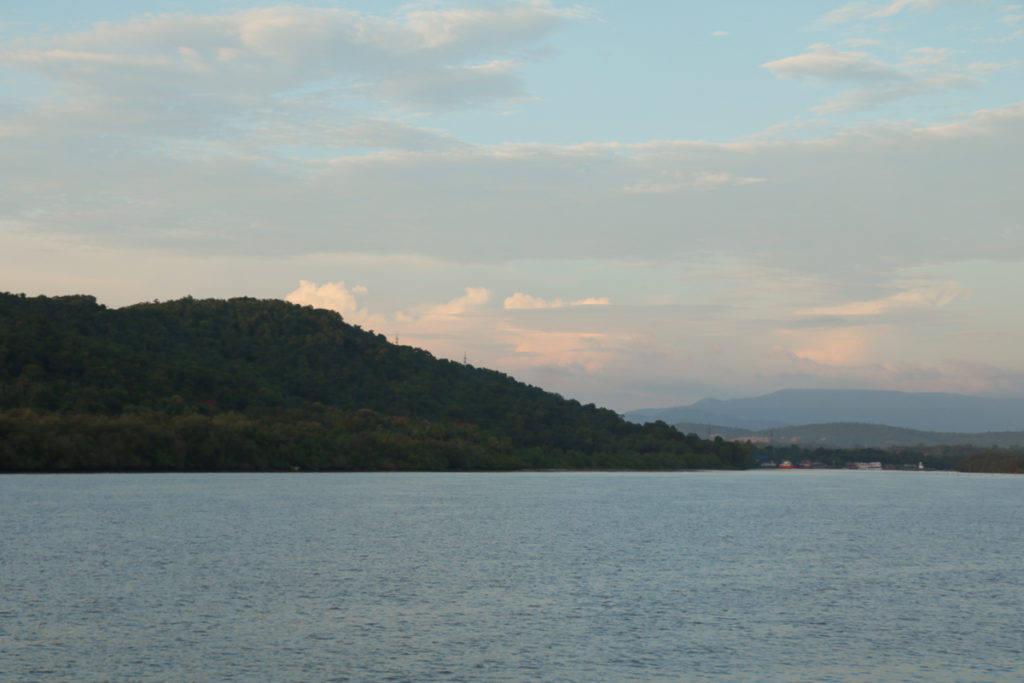
An adventure in Narve
This time, I accompanied Fernando as we set to rediscover the Chapel. Given the overgrowth of vegetation in the surrounding region, locating the chapel is a task in itself. However, we banked on the obvious hints : that the chapel should be directly opposite the Church of St. Estevam. As we drove up the hill at Narve, our task was made a bit less cumbersome as a pathway was cleared in the vicinity of the chapel for the construction of a canal. On our ascent, we had the Church of St. Estevam in the corner of our eyes, and we knew the destination was near. Still, the effect of years of continuous vegetation growth, aided more so by the recently concluded monsoons, made it difficult to spot.
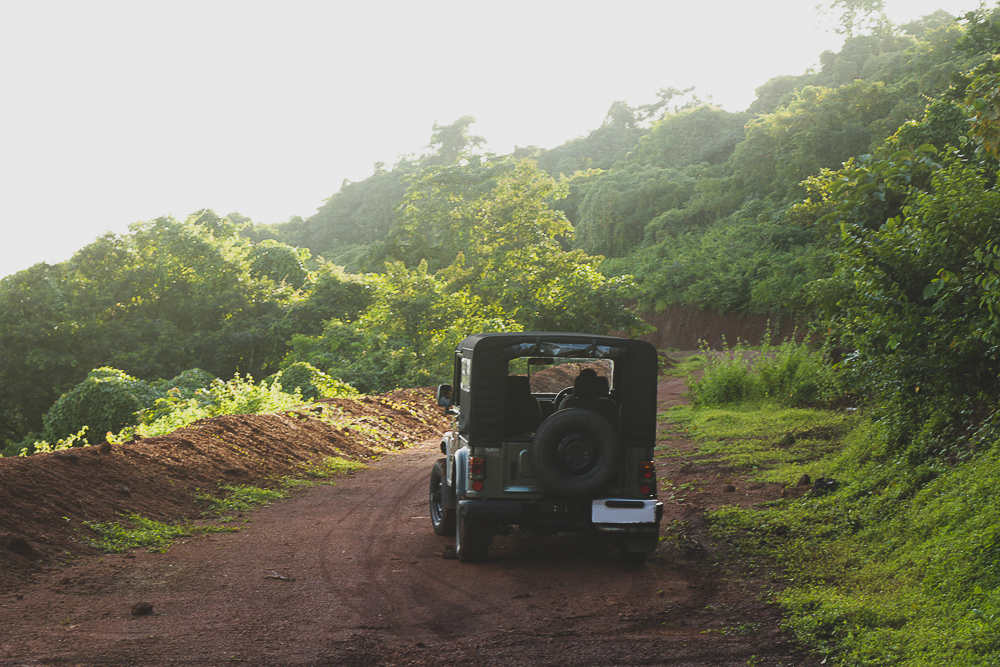
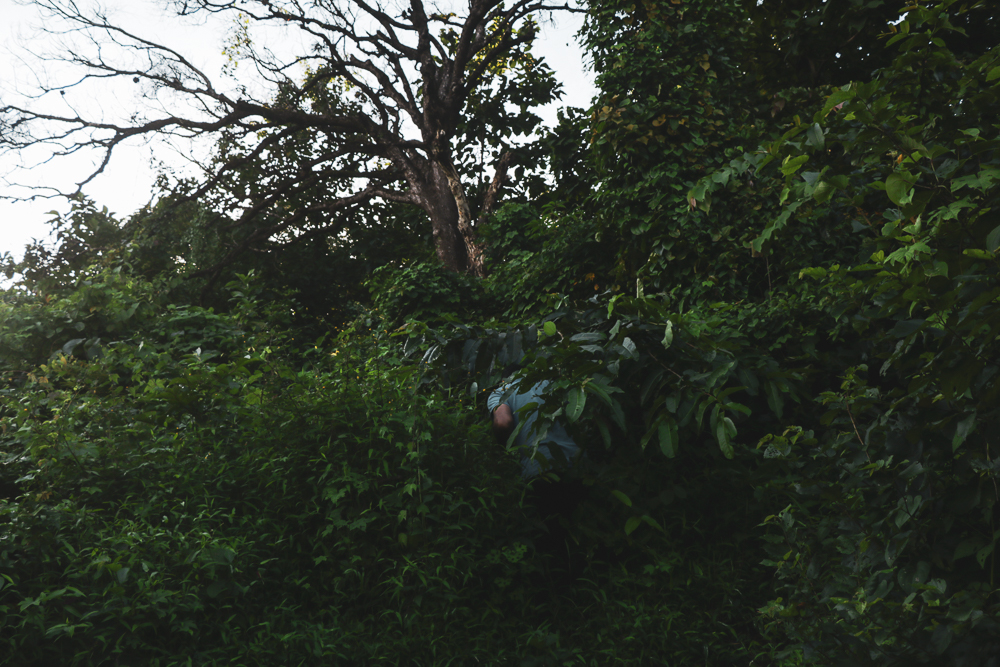
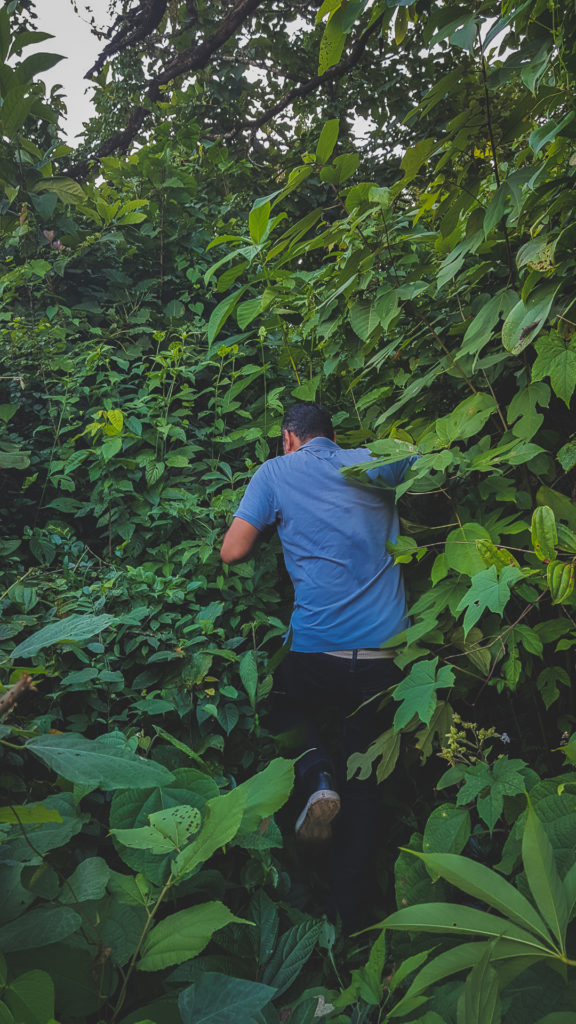
Along the way, I finally caught a glimpse of what looked like the pinnacle of the gable of the Chapel that rose above the bushes. I shouted out to him to stop the car. With blind courage, we put our feet into the bushes and literally walked into the jungle, not sure where our feet were even landing. But soon, we touched a solid surface – it appeared to be a flight of steps in stone. And we knew the end was near.
A few steps later, there it was. Brushing aside some leaves, the chapel revealed itself to us in its full glory. It was a moment of epiphany – one that is tough to put down in words. In that moment, I felt this immediate connection to the modest edifice in front of us. A strange feeling took over me – I felt I somehow knew the man who built the chapel – the glimpses of his life that I had just heard about flashed before my eyes. That is the power of architecture. It physically embodies the emotions and aspirations of people, a great person in this case – which is why I could feel a deep connection to him even decades after his death.
The date of construction is obscure, but considering that Dr. M. C. Dias returned to Goa in 1888 and passed away in 1936, the date could roughly be somewhere between these two milestones. That could mean it has probably crossed a 100 years.
The structure itself is simple. The façade displays ornamentation in the form of fluted pilasters that break up a pattern of horizontal bands. In the front, the masonry extends outwards to form a set of butresses – but in an offset-ed manner except for its solid base.
Notable are the rounded half-spheres on either side of the gable, which is topped with a cross. One of the doors had fallen, so the Chapel is essentially unguarded which is why it was a surprise that interiors are fairly intact. A statue of Our Lady took the centre stage at the altar, and a small statue of St. Francis Xavier was found on the retable. There was a single room behind the altar which a bat seemed to have made its habitat.
The interiors were well kept, possibly owing to the Fibre cement sheet roof above it that rested on what looked like the original wooden truss. As we turned our heads, The village of St. Estevam appeared framed between the tall trees in front of us.
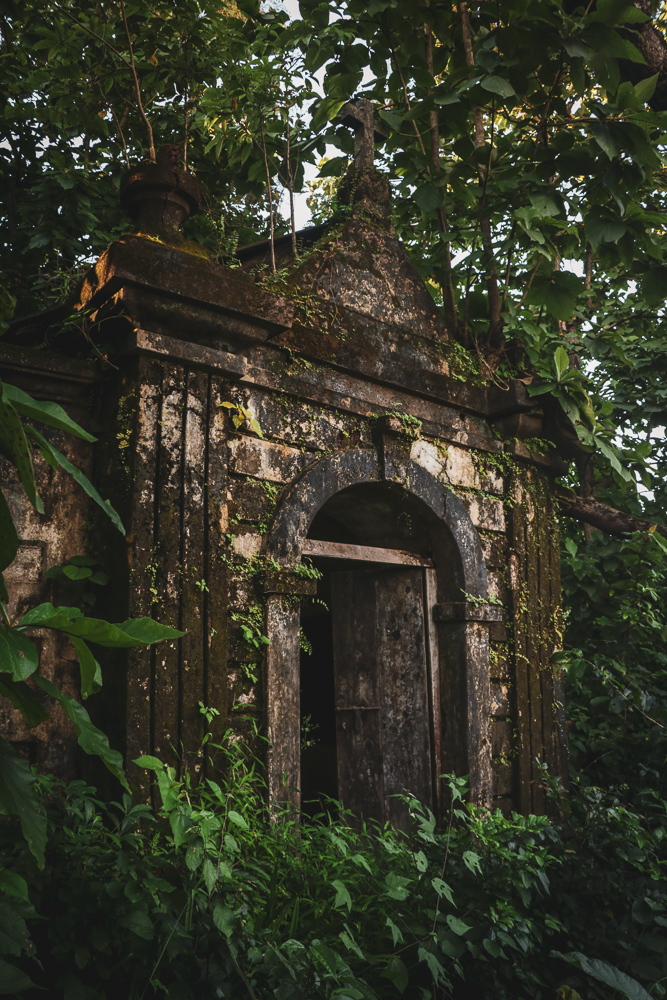
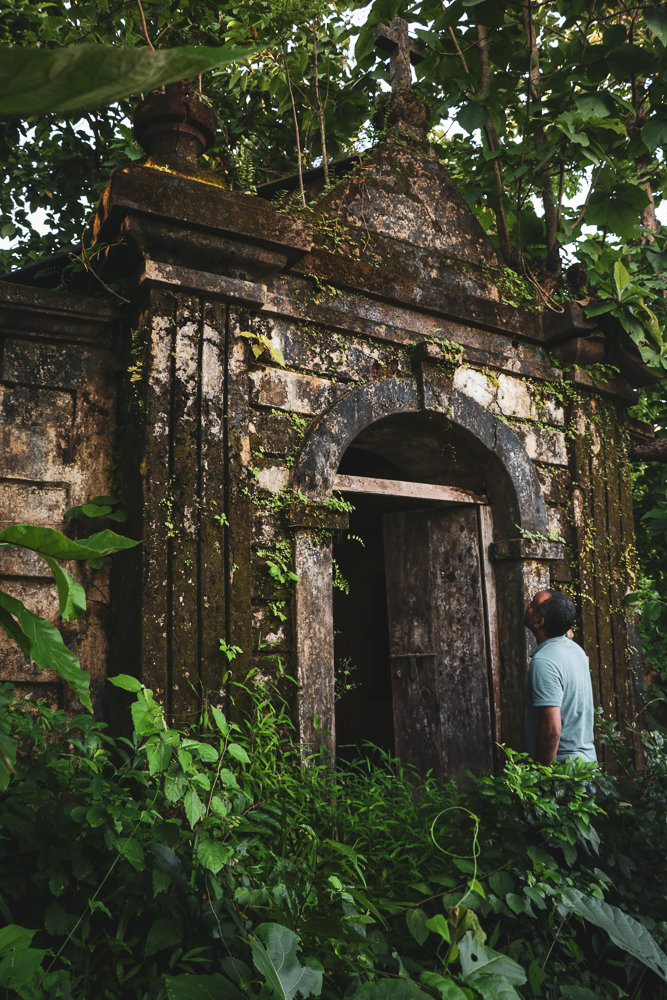

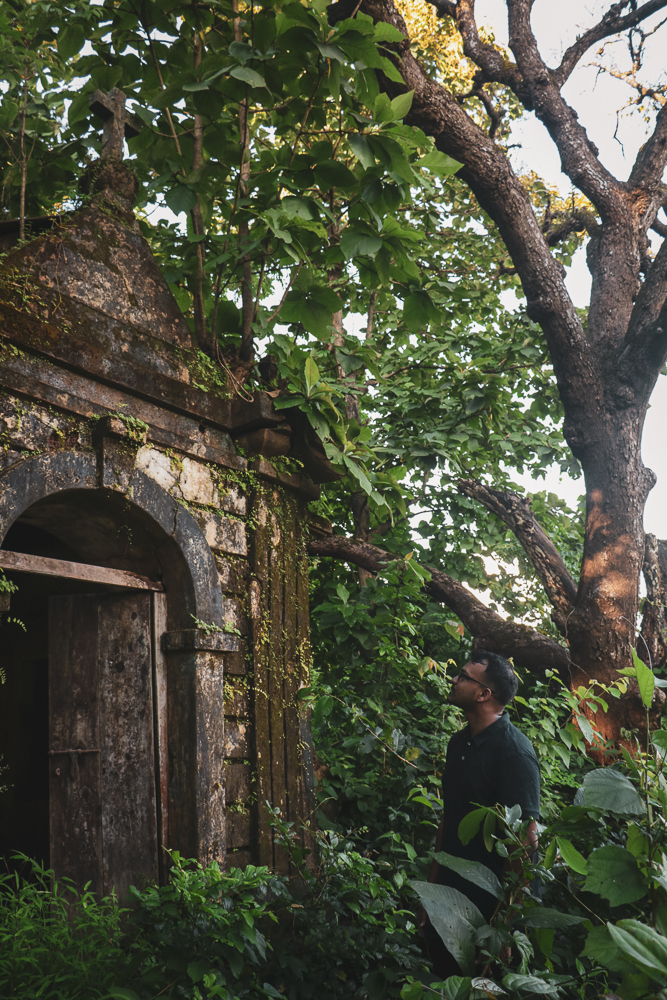
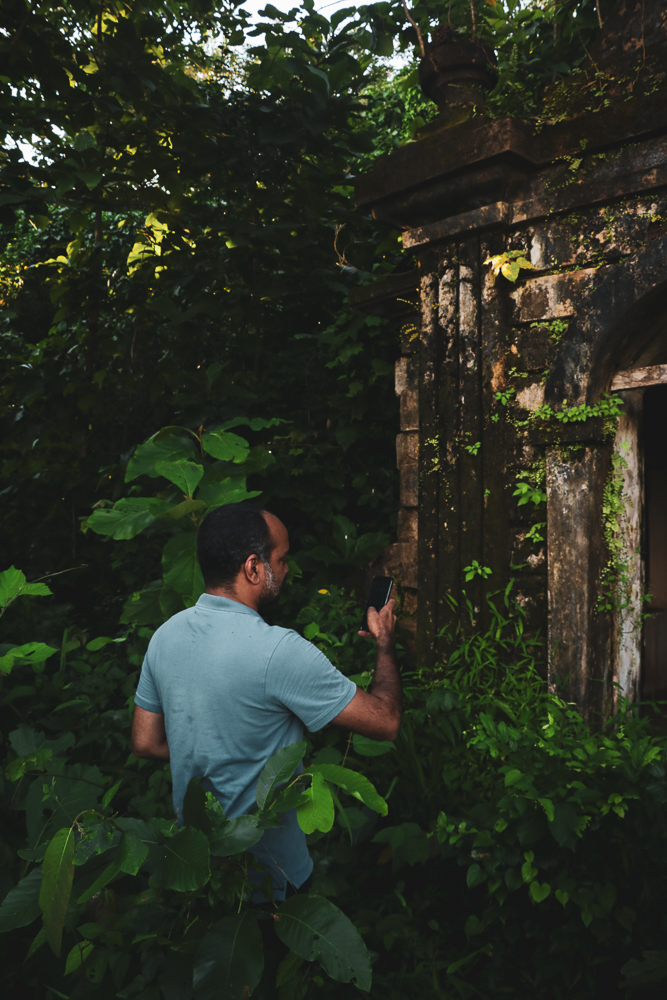
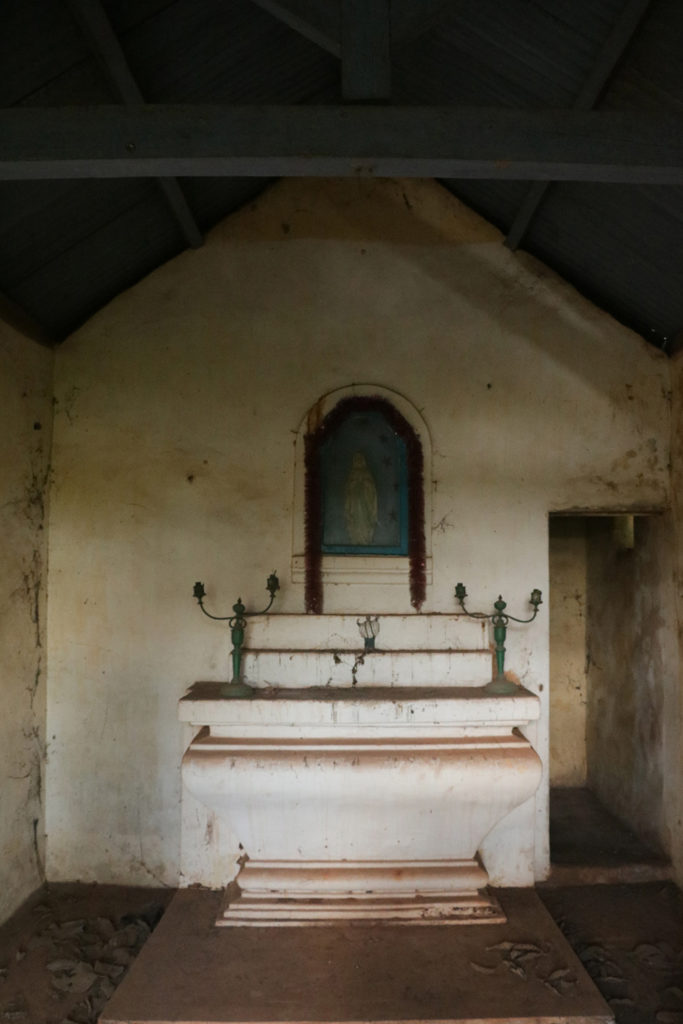
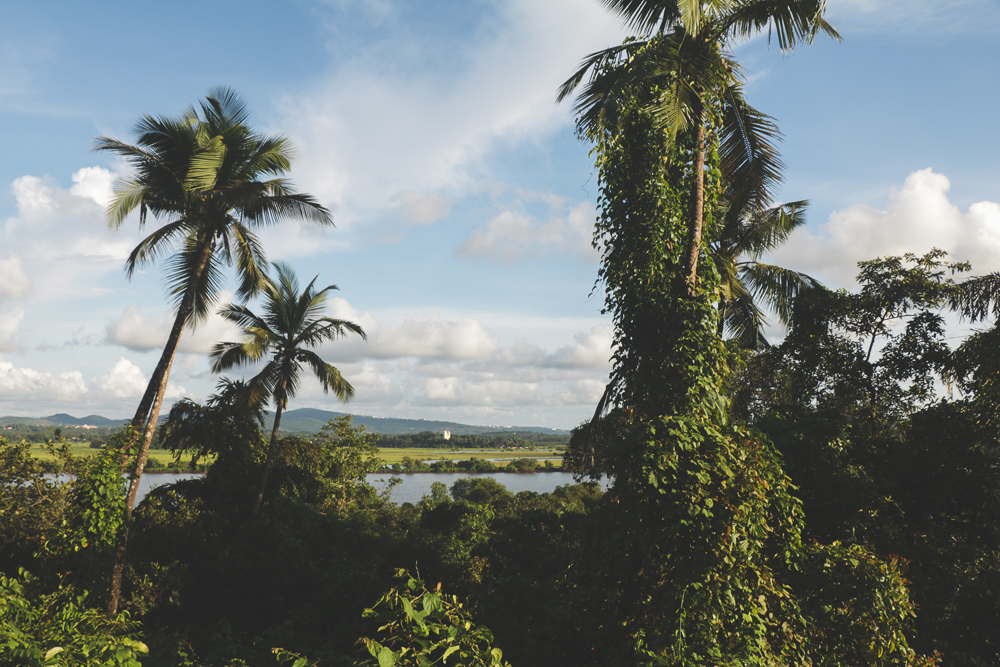
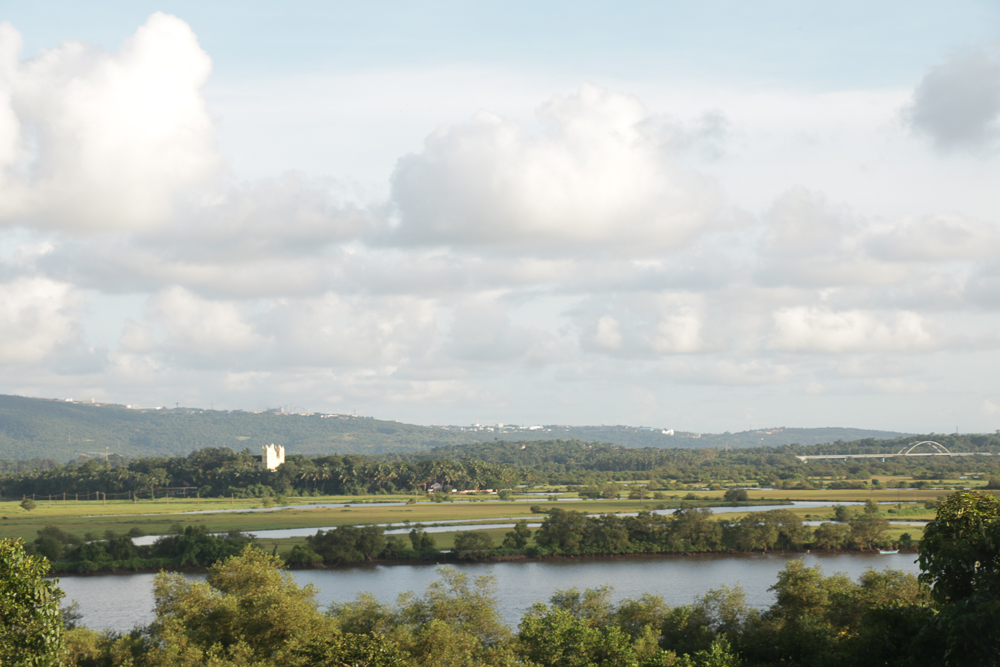
The Chapel with its stark simplicity and relatively elaborate facade is undoubtedly beautiful. Moreover, it is a part of the legacy of Dr. Miguel Caetano Dias, a true son of the soil and one of the greatest Goans of all time. In recent times, the canal work that is ongoing in the vicinity of the chapel posed a threat to the Chapel, but it has luckily managed to stay untouched. Ideally, it should be restored in remembrance of him and his contribution to Goa.
(Special thanks to Ar. Fernando Dias Velho for facilitating the experience and for the edits)

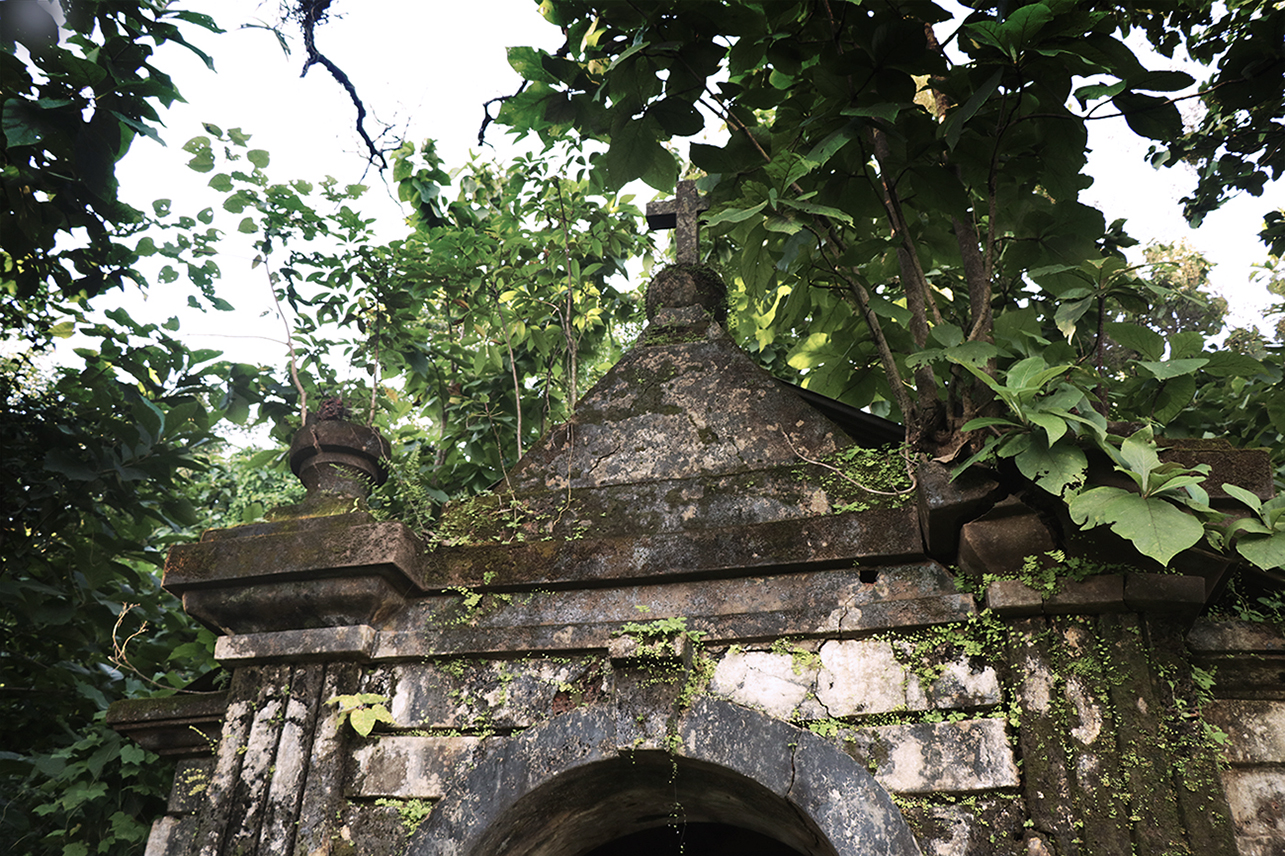

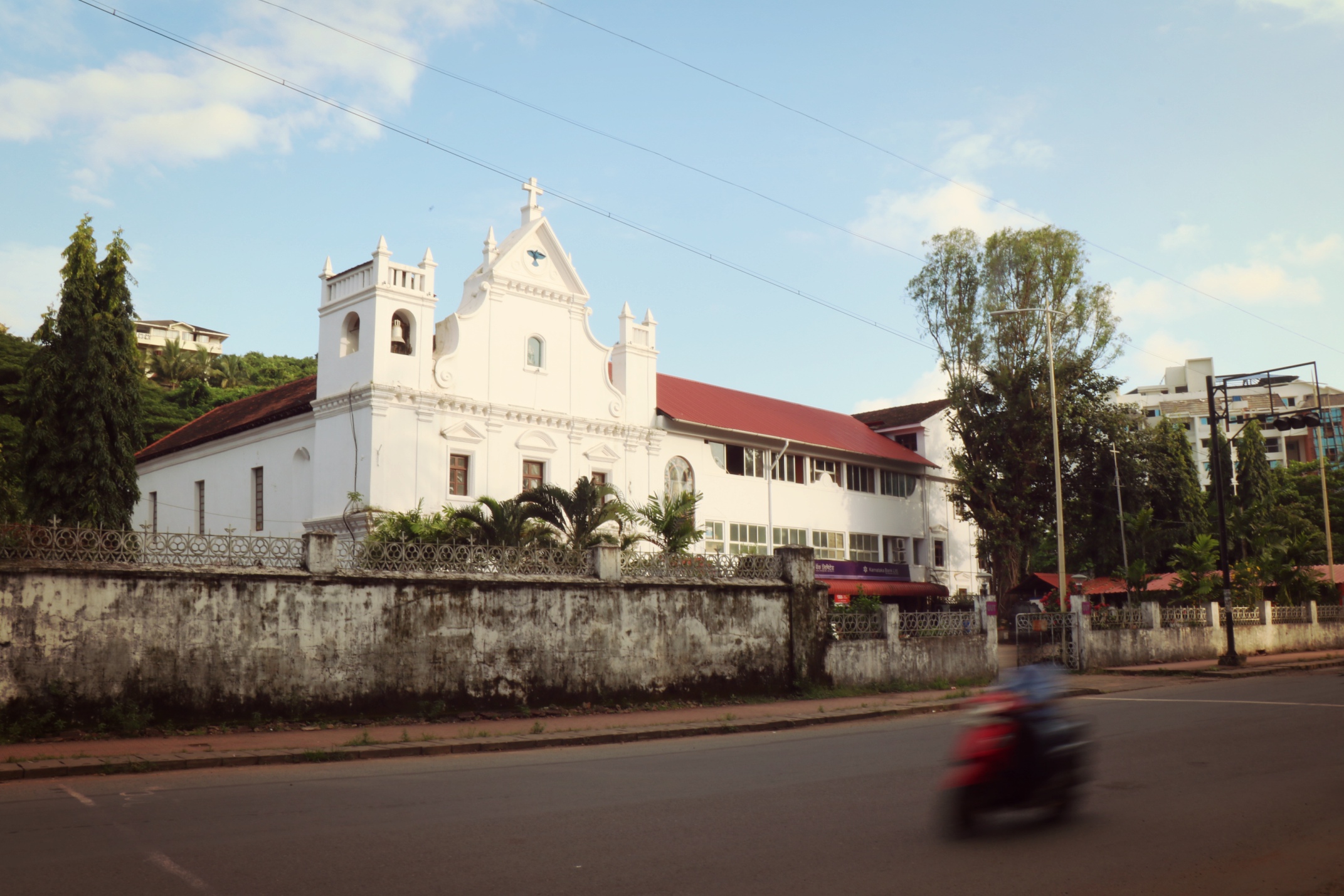

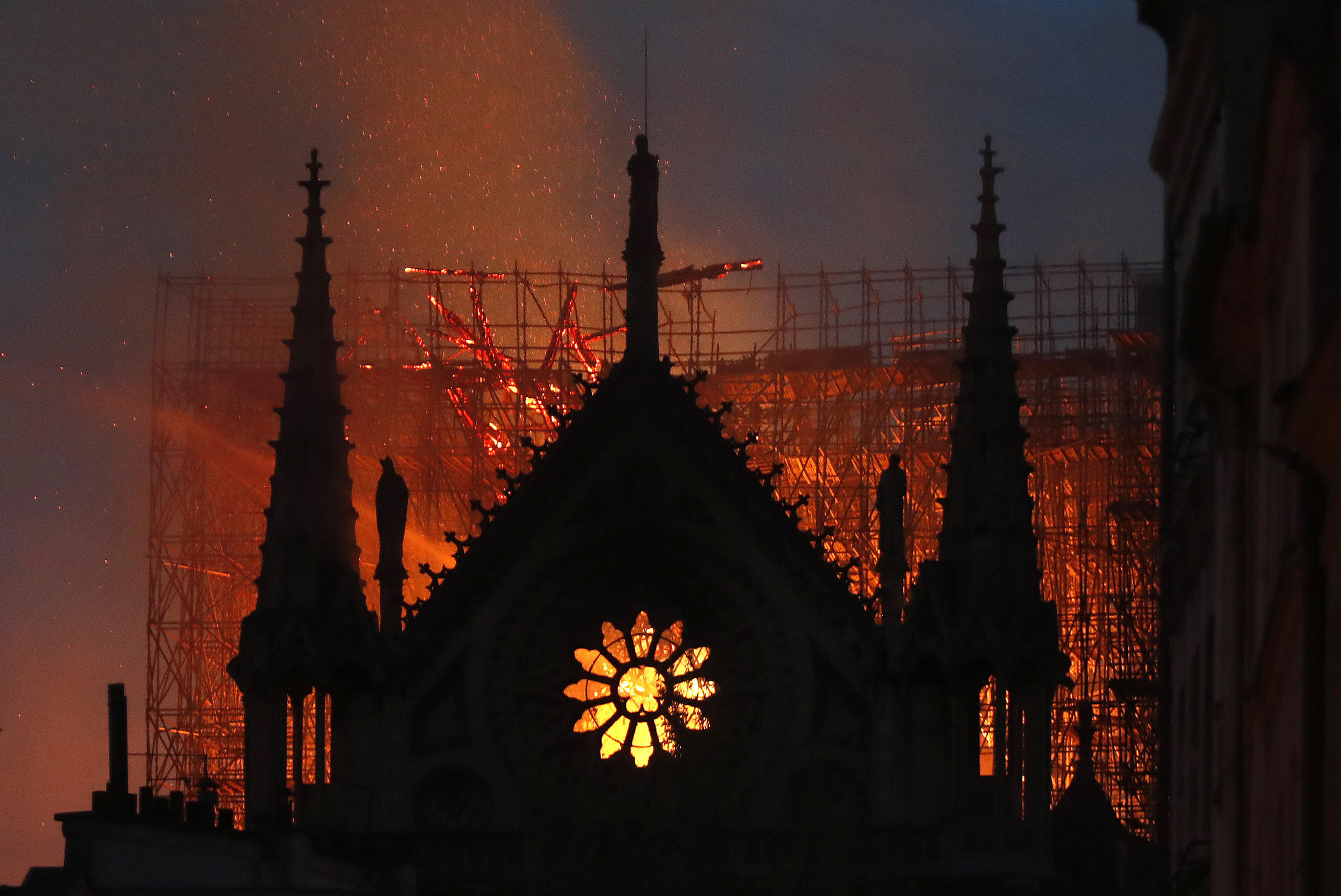
Dear Aires, Thank you for your kind words. I shall inform Fernando about your message, and wish you all the best. I’m always ready to help out as well. – Lester
Dear Lester,
I am Aires Dias e Dinis, one of the grandsons ( probably one of the few still alive) of Dr. Miguel Caetano Dias, son of his daughter Marta. I discover recently your excellent article and wish to thank you very much for what you have accomplished bringing this chapel to light. You cannot imagine how we, all his numerous descendants dispersed around world ( I am in Paris), appreciate the precious information you collected and diffused. It is for us vital to know our exceptional heritage and to transmit it to
the younger generations by these troubled times. Please inform my cousin Fernando Dias Velho that I will be very pleased to establish contact with him as we are trying to put together the memories and data, collected from different sources, on our family. Thanks again for your contribution, best regards,
Aires
Very nice article, but there are two misconceptions.
1Miguel Dias wasn’t the only Goan to be General. There was another one, called JOSÉ CAMILO DA COSTA ÁLVARES.
2. I Would like very much you to proof that Portugal and Portuguese regime “tolerated” but didn’t liked Goan doctors
Thank you